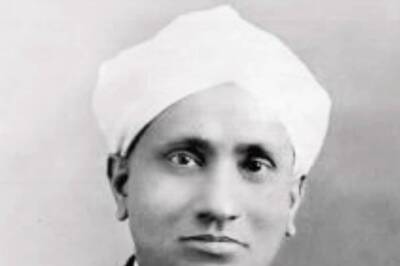
views
CHENNAI: The Association of Professional Town Planners (APTP) and the Institute of Town Planners India (ITPI) have questioned the role of the High Court-appointed monitoring committee post the Second Master Plan, contending that the committee was appointed only to examine the issues arising out of regularisation of unauthorised and deviated constructions that had come up for the period 2000–2002 during the First Master Plan.The statement by the two professional town planners’ associations comes against the backdrop of the sealing of commercial establishments in T Nagar by the Chennai Metropolitan Development Authority (CMDA) after the suggestions of the monitoring committee.ITPI sources said upon approval of the Second Master Plan, it was for the CMDA and the Chennai Corporation to look after the regular approval of planning permission and enforcement action, and that the monitoring committee did not have any role.APTP president K M Sadanandh alleged that from the published minutes of the meeting, it could be ascertained that the monitoring committee was not focusing on the subject matter and the responsibilities vested with it in the August 2006 order.“It is diverting to other issues, including providing opinion for demolition of unauthorised constructions made after July 2007, T Nagar Redevelopment Plan and the around 1,057 cases the High Court had issued orders for providing service connections without insisting on Completion Certificates and the monitoring committee’s decision to file writ appeals against the High Court order,” he said, adding that he had written to the secretary of housing and urban development, vice-chairman of CMDA and convenor of the monitoring committee.Sadanandh said the monitoring committee should have been assisted by a full-time multi-disciplinary team with time-bound service and scientific approach in ascertaining the issues of the unauthorised construction or building violations and the nature of occurrence considering socioeconomic, psychological, geographic, political and public health engineering aspects.Interestingly, some of the members such as A Srivatsan and Durganand Basalvar were not urban planners, neither by qualification nor by practice, and their designation mentioned as ‘urban planner’ misled the court, monitoring committe, government, general public, and other real professionals, including town planners, as if the required town planning inputs were developed by the monitoring committee, Sadanandh observed. He also said that the Justice S Mohan Committee had submitted its report for making amendments to the Tamil Nadu Town and Country Planning Act, 1971, a year ago. “The outcome of the amendments needs to be disclosed or finalised prior to initiating any action by the monitoring committe,” he said.It was ascertained from the published minutes of the meetings that the monitoring committee meetings held 40 times over a period of five years (six minutes of the meetings & Action Taken Reports are not published) and over 45 persons representing six departments (official members) had attended the meetings so far at seven persons per department. None of the official-members of the monitoring committee representing the six departments is continuing at present, he added. While the overall attendance of the monitoring committee members was about 62.5 per cent, (Official members 65.5 per cent and non-official members 61 per cent), about 16 meetings were held with 50 per cent to 25 per cent members without adhering to the quorum, the APTP said.




















Comments
0 comment